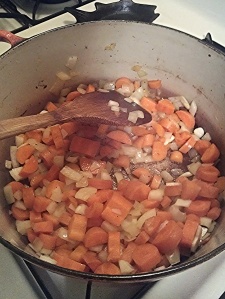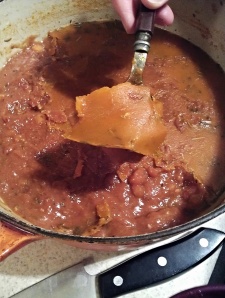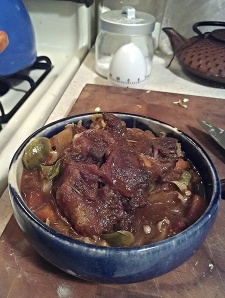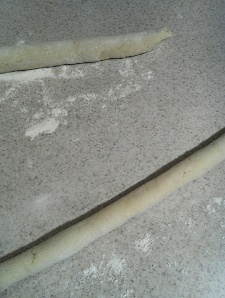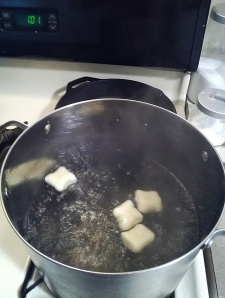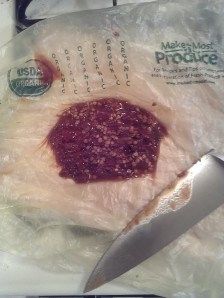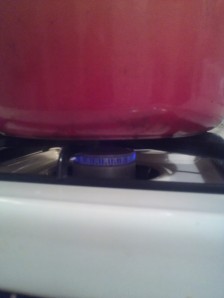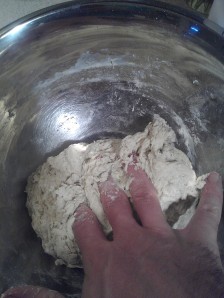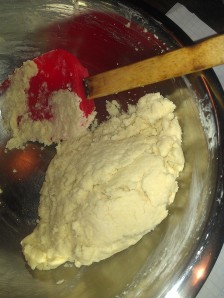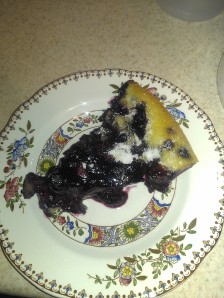I’m not 100% sure, but I think I just invented a new candy, then I dipped it in chocolate! I’m calling it the oat praline buttermilk bonbon. It’s a two-part recipe and takes a little doing, but it’s totally worth it.
Oat Praline Buttermilk Bonbons
Oat Praline
-1/3 cup steel-cut oats
-1/2 cup sugar
I haven’t tried this recipe with rolled oats yet, so I’m hesitant to say it will work just the same, but it might.
First things first, toast the oats by placing them in a dry frying pan (a six-inch if you have one) on a low heat. In a few minutes they’ll darken up a little and start to smell nice and toasty. Shimmy and stir them often to keep the toasting even. When they start to make a little crackly noise, transfer to a plate to cool.

Now place the sugar in the same pan and melt on a medium low heat. When the sugar begins to melt, begin stirring with a rubber spatula and don’t stop until it’s smooth and slightly darkened. Turn off the heat, add in the oats and quickly stir until fully incorporated. Pour the mixture onto a parchment paper or, in a pinch, a buttered baking sheet.

Let cool for about 15 minutes, then break into small pieces and crush either with a blender or chop on a cutting board, then use a cup and bowl as a makeshift mortar and pestle. This makes about 3/4 cup, which should be stored in an airtight container. Sprinkle on cakes, ice cream, oatmeal, or use in:
Old Fashioned Buttermilk Candy
When researching buttermilk candy I found this exact same recipe in no less than 6 different places, which means two things: 1) I have no idea where it originally came from, and 2) It had to be delicious. It is. My wife said it was candy for grown-ups.
-1 cup sugar
-1/2 cup buttermilk
-1 1/2 Tablespoons butter
-1/4 – 3/4 cup oat praline, depending on how oaty you like it.
Measure the sugar, buttermilk, and butter right into the frying pan and turn on a low heat. While waiting for things to get going, fill a clear glass with cold water. Trust me. You’re also going to need a spoon, mixing bowl, whisk, and small, buttered dish. A plate will work in a pinch.

Once the sugar starts to belt and the milk boils, stir with your rubber spatula to dissolve the sugar. After that, stir just often enough to prevent sticking. After the mixture has been simmering for 10 minutes, when the mixture has thickened a bit, take a small spoonful of the liquid and dribble it into the water. It’s not really necessary to go through all the stages of candy temperatures (which wouldn’t be that accurate anyway due to the buttermilk and butter in the sugar) so I’ll just give you the pertinent information. When the liquid hits the water, it will probably dissipate into bits. This means it’s not ready yet. Try again about once a minute until the drop to turns into a little ball that stays more-or-less in ball form all the way down.

When your candy reaches this stage, pour it into a mixing bowl, add the praline and start whisking. This is going to take about 10 minutes, so if you have an electric mixer you may want to use it.Keep whisking until pretty cool, at which point it should be thick and hold streaks pretty well. Transfer this to the buttered dish and allow to cool at room temp at least 3 hours or even overnight. Form into 1 1/2 inch balls, you should end up with about 14, depending on how much praline you used. Refrigerate until set, then store in an airtight container layered with parchment paper. These are super-delicious on their own or just rolled in a little powdered sugar, but if you want to chocolate coat them, who am I to stop you? Also, a little touch of sea salt never hurt.

Chocolate Coating
-1/2 lb. semi-sweet chocolate
-that is all
Set up a double boiler by placing the chocolate in a bowl that is sitting on top of a pot with about an inch of water in it. Set to a medium heat and stir the chocolate until it melts. Be very careful not to let any water get in the chocolate or it will become all grainy and horrible.
When the chocolate is smooth, remove the bowl from the pot. Dip the candies in the chocolate one at a time, coating and removing as quickly as possible. You can cover them entirely if you like, or dip them partially like buckeyes. Refrigerate again to set the chocolate (half-an-hour) and store with parchment paper in an airtight container, which is always a good rule for storing candies.





